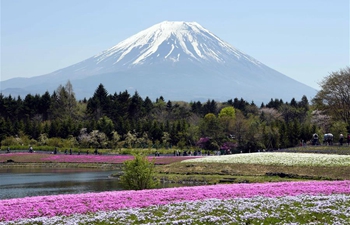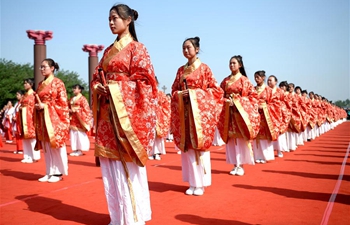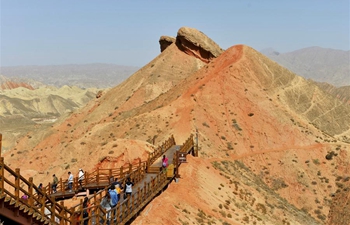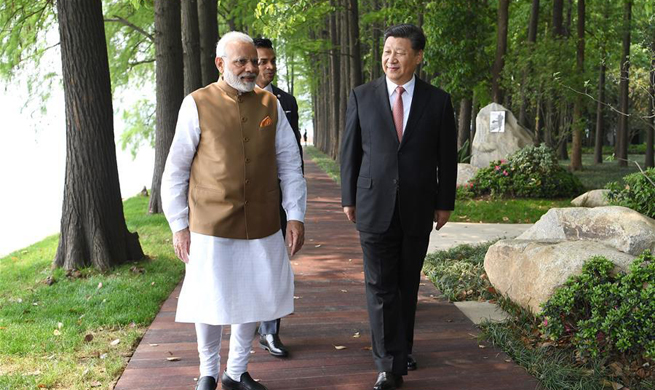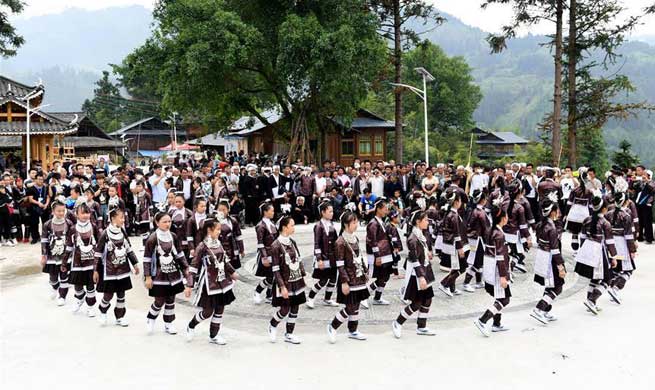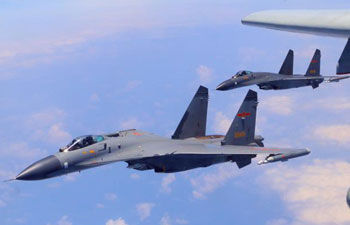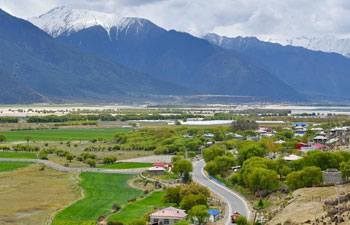by Xinhua writer Lyu Qiuping
BEIJING, April 30 (Xinhua) -- A train carrying 41 containers departed from Tangshan, north China's Hebei Province, in late April, marking the inauguration of a further line of freight between China and Europe.
The train will travel 11,000 kilometers to the Belgian city of Antwerp through Kazakhstan, Russia, Belarus, Poland and Germany in 16 days.
By March, freight trains were operating between 43 Chinese cities and 41 cities in 13 European countries, becoming a major freight transport means between China and Europe.
Tangshan, a coastal city some 150 km away from Beijing, is known for its coal resources and steel industry.
In 1881, a 9.7-km railway line from Tangshan to Xugezhuang opened for coal transport. Designed by English engineer Claude W. Kinder, it is the first line with a global standard track gauge of 1,435 mm in China.
As the conservative imperial family of the Qing Dynasty (1644-1911) believed noisy moving locomotives with steam and smoke were inauspicious and would disturb the resting souls at the imperial tombs not far away, carriages on the line were only approved to be dragged by horses and mules.
Earlier, local coal had to be carried out on horseback to the sea port before it was loaded on ships to the Beiyang navy fleet in Shandong Province for use, said Liu Fuzeng, deputy Party chief of Tangshan locomotive operation and maintenance section of the Beijing Railway Bureau. The bureau manages railway operations in Beijing, Tianjin and Hebei.
The line was later extended to Mukden, now called Shenyang in Liaoning Province, transporting both cargo and passengers.
During the extension project, Zhan Tianyou, a Yale graduate and designer of a railway bridge along the line -- Luanhe Bridge, drew attention of the government, according to Liu.
Zhan was later appointed as chief designer of the Beijing-Zhangjiakou line, the first railway designed and built by China in the early 20th century, which is still in use.
"Although the design and construction were done by Chinese people, all parts, including every single nail, were exported from abroad," said Gu Lin, a manager with the Tangshan South Station, the starting point of the Tangshan-Xugezhuang line.
LOCOMOTIVES
While the line was being built, a locomotive designed by Kinder was secretly being assembled with second-hand boiler and cylinders.
The locomotive was put into use in 1881, called "Rocket of China," according to the "Imperial Railways of North China," a book written by British writer Peter Crush.
Having no idea of what a rocket was, Chinese mine workers named the "fire breathing, smoke and steam puffing monster" as "the dragon," according to the book.
Li Zhensheng, 57, joined the driver team as a boiler worker on steam locomotives after he retired from the army in 1986. He and the assistant driver had to take turns to keep filling the coal, spade by spade. The water they drank was filled with coal dust.
As the boiler blocked the drivers' view in the front, they had to pop their heads out of the side window constantly for safety checks. Many of them developed shoulder and neck problems.
When Li served as an assistant driver of a diesel locomotive in 1989, he considered it as a "leap-frog progress."
"No more dirty coal, dusty air and constant stretching outside, and we even had fans and an electric stove," he said.
When the electricity locomotives were equipped on the line in 2010, drivers got air conditioning and a microwave oven. "The train became faster and faster, and more and more comfortable," he said.
Wang Lanbiao, a locomotive maintenance worker, said the reduced vibration of the trains were partly attributed to the shock absorption technology.
"Unlike trains in the past which had spring to reduce the vibration, now the trains are equipped with hydraulic damper and even aseismic airbags," he said.
On a China-made high-speed train, which runs as fast as 350 km per hour, a coin is able to stand still.
ONBORAD FAST TRAIN
At the new Tangshan Railway Station, 71-year-old Zhang Shuyun was waiting for her train to Binhai, Tianjin Municipality. The G1262 train would take 20 minutes to carry her back home, one sixth of the time she used to spend 40 years ago.
It was the first time for Zhang, a former primary school teacher, to revisit Tangshan since her retirement around 2000.
Zhang recalled that in the past , the train coaches were full of stink and smoking smells, and the train was very crowded, with some passengers standing in lavatories and sitting on basins.
"When someone had to use the toilet, those packed inside had to get out before letting him or her in," she said.
Back then, Tangshan was the only passage to northeast China by rail.
Since China initiated reform and opening drive in 1978, a market economy has resulted in increased freight and passenger mobility.
The railway network in the country hit 127,000 km in length at the end of 2017, including 25,000 km of high-speed railway. China also helps building railway lines in foreign countries, such as Zambia and Kenya.
More railway lines are built with all made-in-China parts.
The changes are likewise amazing in urban construction. Zhang, who had never come back to Tangshan since her retirement around 2000, found herself lost in the city.
"I failed to spot any former buildings, and knew none of the street names mentioned by the taxi driver," she said, adding she had to call her former students to pick her up.
Wu Zhanguo, deputy director of railway affairs office of Tangshan, said apart from three more lines being built in the city, construction of a new station complex that would combine the airport, railway transit, subway and bus facilities together had started.
"Easier traffic will surely help attract talent here," he said.







